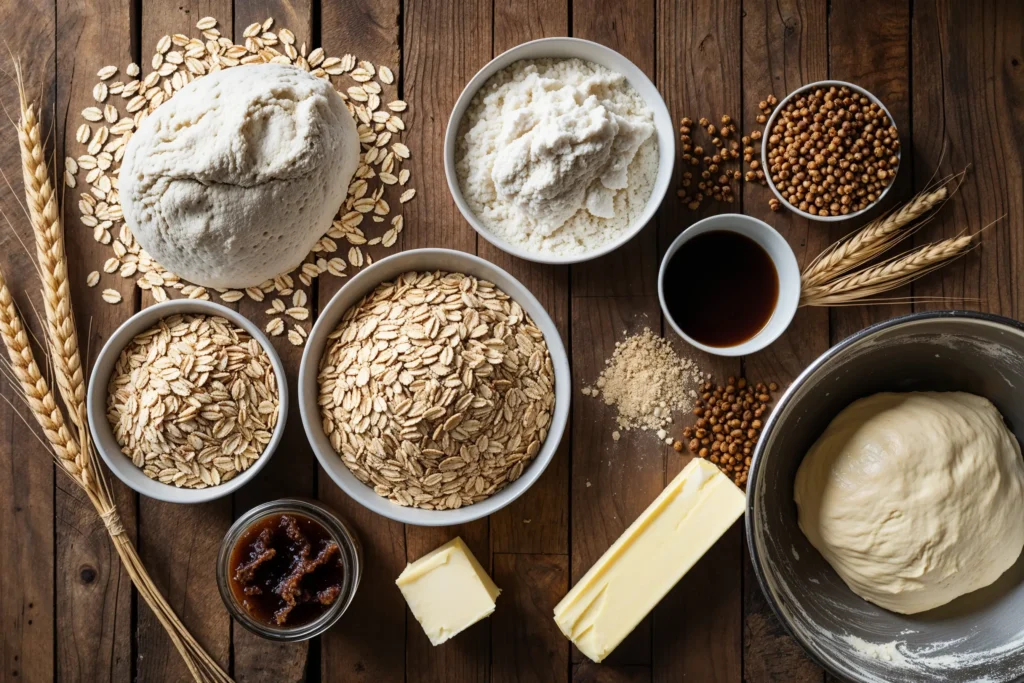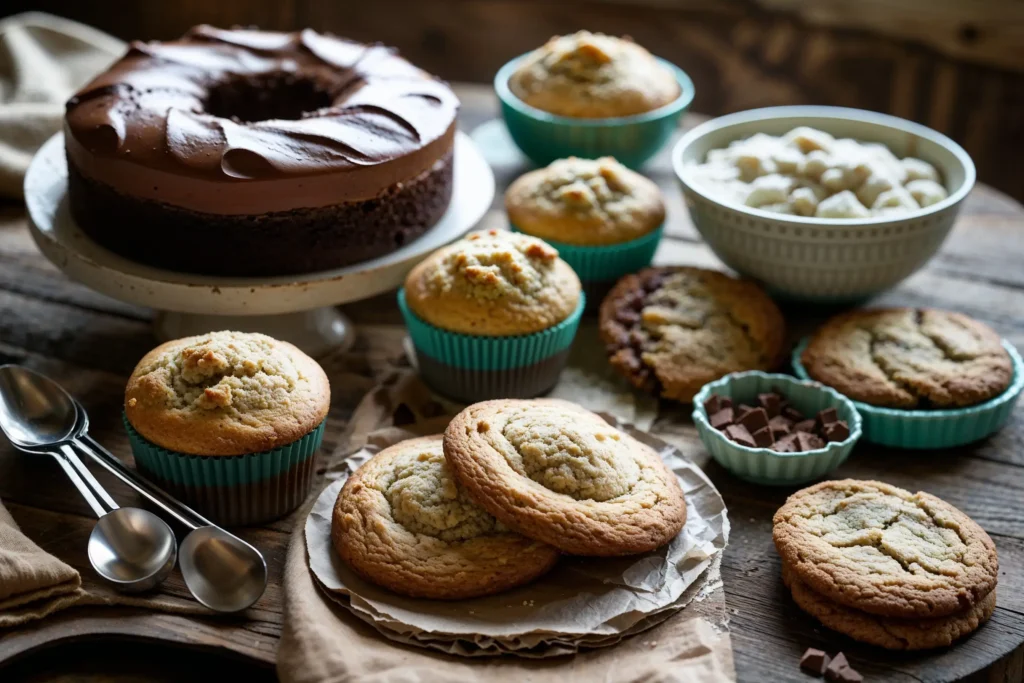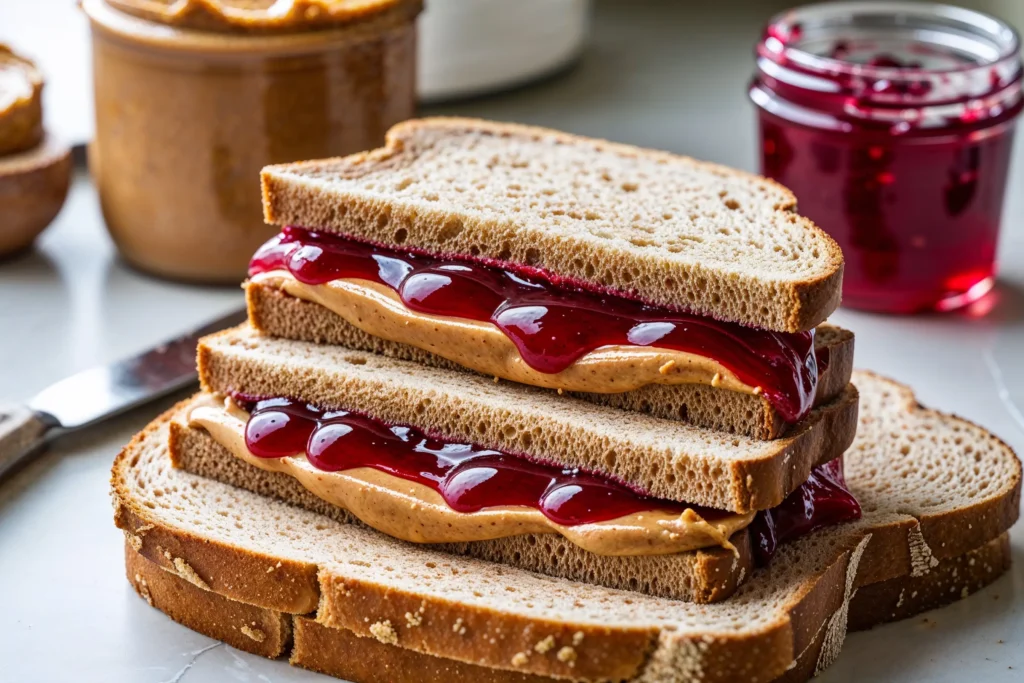Table of contents
Table of contents
Understanding the Basics of Bread Grain Recipes
Bread grain recipes form the foundation of numerous culinary traditions, combining simple ingredients with precise techniques to yield versatile, delicious results. Whether you’re preparing a loaf for a sandwich or crafting a base for a peanut butter and jelly recipe, understanding the role of grains is key.
Grains, such as wheat, rye, and oats, are central to bread-making due to their gluten-forming properties and nutritional value. To discover a creative and hearty option, check out this Oat Molasses Bread Recipe, which highlights the natural sweetness and depth of oats.Whole grains contribute fiber, vitamins, and minerals, enhancing the texture and flavor of bread. On the other hand, refined grains are often used for softer textures. Balancing these elements allows bakers to create unique blends suited for specific recipes.
A well-rounded bread grain recipe involves not only selecting the right flour but also managing the dough’s hydration, fermentation, and baking process. Transitioning from basic techniques to experimenting with enriched doughs or seeded varieties can yield flavorful loaves perfect for layering spreads like peanut butter and jelly.
The pairing of bread grains with a peanut butter and jelly recipe emphasizes how adaptable this staple can be. Experiment with grains like spelt or barley for added texture, ensuring each bite complements the sweet and savory notes of your sandwich. Start with the essentials, and you’ll find endless possibilities for creative, grain-forward recipes.

Crafting the Perfect Bread Grain Recipe Peanut Butter and Jelly
The peanut butter and jelly pairing has stood the test of time as a beloved culinary staple, cherished for its simplicity and flavor balance. Combining creamy or crunchy peanut butter with sweet, fruity jelly creates a satisfying contrast that appeals to all ages. This classic duo has found its way into countless recipes, including bread grain-based creations that serve as the perfect vessel for its rich taste.
What makes this combination timeless is its versatility. Whether spread on soft whole-grain bread, layered into a wrap, or baked into pastries, the harmony of sweet and nutty flavors works in a variety of contexts. The bread grain itself plays a crucial role, offering the structure and texture that enhances the overall experience.
Experimenting with different jellies or preserves, such as strawberry, raspberry, or even apricot, can add a personal twist to the classic peanut butter and jelly recipe. Pairing these spreads with bread made from hearty grains like oat or multigrain introduces an added layer of depth to each bite.
By understanding the essence of this iconic pairing and incorporating it into creative recipes, you can craft dishes that are both nostalgic and innovative. From sandwiches to baked goods, the combination remains a delightful staple in kitchens worldwide.
Key Ingredients for Your Bread Grain Recipe Peanut Butter and Jelly
Creating the ideal bread grain recipe peanut butter and jelly recipe starts with selecting high-quality ingredients that bring balance and texture to your dish. Each component plays a crucial role in achieving a satisfying and wholesome result.
Key Ingredients for the Bread Grain Recipe
- Whole Grain Flour: Opt for whole wheat, spelt, or a multigrain blend to introduce depth and nutrition to the bread. The choice of flour impacts the bread’s flavor and texture.
- Yeast or Sourdough Starter: These provide the leavening necessary for soft and airy bread, perfect for holding the peanut butter and jelly.
- Liquid Ingredients: Water or milk helps create the dough’s structure, with milk adding a tender crumb.
- Sweetener: A touch of honey or maple syrup balances the bread’s earthy flavor without overpowering it.
Components for the Peanut Butter and Jelly
- Peanut Butter: Choose creamy or crunchy varieties, based on your preference. Natural peanut butter offers a purer taste.
- Jelly or Preserves: Strawberry, grape, or raspberry jelly brings sweetness to complement the nutty richness.
When combined with freshly baked bread, these ingredients create a recipe that’s both timeless and customizable. Adjust ratios or add toppings like banana slices for a personalized touch.

Health Benefits of Bread Grain Recipe Peanut Butter and Jelly Recipe
The bread grain recipe peanut butter and jelly recipe offers more than just great flavor—it’s a source of nutrition that supports a balanced diet. Each component contributes essential nutrients, making this a wholesome option for meals or snacks.
Nutritional Value of Bread Grains
Whole grains, such as wheat, oats, or rye, are packed with fiber, vitamins, and minerals that promote digestive health and sustain energy levels. These grains provide complex carbohydrates, which are broken down slowly, helping to maintain steady blood sugar levels. Additionally, the natural nutrients in whole grains support heart health and may reduce the risk of chronic conditions.
Peanut Butter’s Contributions
Peanut butter is rich in protein and healthy fats, which are essential for muscle repair and overall energy. The monounsaturated fats found in peanuts support cardiovascular health, while its protein content helps keep you feeling full for longer periods.

The Sweetness of Jelly
Jelly, especially when made from real fruit, contributes natural sugars and antioxidants. These compounds aid in fighting free radicals, which can protect the body from oxidative stress.
When combined, the bread grain recipe peanut butter and jelly recipe delivers a satisfying meal that balances carbohydrates, protein, and fats, making it a nutritious and enjoyable choice for all ages.
Creative Twists on the Classic Bread Grain Recipe Peanut Butter and Jelly
The bread grain recipe peanut butter and jelly recipe is a timeless favorite, but adding unique twists can bring fresh excitement to this classic pairing. From incorporating new ingredients to experimenting with presentation, there are endless ways to transform the traditional PB&J into something extraordinary.
Savory and Sweet Variations
- Honey and Nuts: Add a drizzle of honey and sprinkle crushed almonds or pecans for a nutty crunch that complements the peanut butter and jelly.
- Cheese Pairings: Layer cream cheese or mascarpone for a creamy, tangy contrast to the sweetness of the jelly.
International Flair
- Tropical Touch: Swap traditional jelly with mango or pineapple preserves and use coconut-flavored bread.
- Spiced Addition: Add a pinch of cinnamon or nutmeg to the peanut butter for a warm, aromatic twist.
Alternative Ingredients
- Nut Butter Substitutes: Replace peanut butter with almond, cashew, or sunflower seed butter for varied flavors.
- Healthier Sweeteners: Use fruit spreads with no added sugar for a lighter, healthier option.
Whether creating a deconstructed sandwich for a gourmet presentation or grilling the sandwich for a warm, gooey treat, these twists on the bread grain recipe peanut butter and jelly recipe make it versatile, fun, and suitable for any palate.
Common Mistakes to Avoid When Making Bread Grain Recipe Peanut Butter and Jelly
Creating the perfect bread grain recipe peanut butter and jelly recipe requires attention to detail and careful preparation. Even small errors can impact the final result. Avoiding these common mistakes will help you achieve a flavorful and well-textured loaf every time.
Using the Wrong Flour
One frequent misstep is selecting flour that doesn’t suit the recipe. Whole grain flours require more hydration and kneading than refined ones. Failing to account for this can result in dry or overly dense bread.
Incorrect Measuring
Measuring ingredients inaccurately—especially flour—can throw off the entire recipe. Always measure by weight instead of volume for greater precision.
Rushing the Process
Skipping steps like proper kneading or proofing can lead to poor texture. Allowing sufficient time for the dough to rise ensures it develops structure and flavor.
Overworking or Underworking the Dough
Over-kneading can result in a tough texture, while under-kneading may leave the bread crumbly. Understanding the correct kneading technique is essential for success.
Ignoring Baking Conditions
Baking without preheating the oven or using an improper temperature can lead to uneven cooking. Always double-check the heat settings before starting.
By avoiding these mistakes, your bread grain recipe peanut butter and jelly recipe will turn out consistent, delicious, and perfect for any occasion.
Storing and Preserving Your Bread Grain Recipe Peanut Butter and Jelly Creations
Proper storage is key to maintaining the freshness and flavor of your bread grain recipe peanut butter and jelly recipe. Whether you’ve prepared a simple sandwich or an elaborate creation, following the right techniques will keep your dishes tasting their best.
Storing Bread
For freshly baked bread, allow it to cool completely before storing to prevent sogginess. Wrap the loaf tightly in a clean cloth or place it in a bread box to keep it fresh for up to three days. For longer storage, slice the bread and freeze it in airtight bags or containers. When ready to use, thaw at room temperature or warm it in the oven for a fresh-from-the-oven texture.
Preserving PB&J Sandwiches
If you’ve prepared peanut butter and jelly sandwiches in advance, wrap them individually in plastic wrap or parchment paper to prevent the bread from drying out. Refrigerate for up to one day to retain freshness.
Avoid Moisture
Store your creations in a cool, dry place to prevent bread from becoming stale or moldy. For added longevity, use a vacuum-sealed container.
With these tips, your bread grain PB&J creations will remain fresh, flavorful, and ready to enjoy whenever the craving strikes. Proper storage preserves both quality and taste, ensuring satisfaction every time.
Popular Variations Around the World
The bread grain recipe peanut butter and jelly recipe may be a classic in many households, but around the globe, creative spins on this staple reflect local flavors and ingredients. These variations highlight the universal appeal of combining nutty spreads and fruity sweetness with hearty bread.
Asia
In Japan, sandwiches are often made with soft, pillowy milk bread, paired with peanut butter and unique fruit fillings like yuzu marmalade or red bean paste. These combinations provide a delightful mix of sweet and tangy flavors.
Europe
In the Netherlands, peanut butter is paired with hagelslag, a topping of chocolate sprinkles, instead of jelly. This creates a rich, indulgent variation served on whole-grain bread. In the UK, marmalade or blackcurrant jam offers a tangy twist to the traditional pairing.
Africa
In Ghana, groundnut paste (similar to peanut butter) is paired with spicy jams or chutneys, giving the sandwich a savory and spicy depth. The bread often incorporates millet or sorghum, reflecting the region’s grains.
North America
Beyond the classic PB&J, adding bananas, honey, or even marshmallow fluff creates rich, layered versions of the beloved recipe.
These regional adaptations of the bread grain recipe peanut butter and jelly recipe showcase how cultural influences can transform a simple dish into something extraordinary.
Conclusion: Celebrating the Bread Grain Recipe Peanut Butter and Jelly Recipe
The bread grain recipe peanut butter and jelly combination is a true celebration of culinary simplicity and creativity. This timeless pairing brings together the wholesome qualities of bread grains with the rich and sweet harmony of peanut butter and jelly, offering satisfaction in every bite. Whether crafted with classic ingredients or adapted with unique twists, it remains a beloved staple that transcends generations and cultures.
Grains like wheat, rye, or oats provide not only a sturdy foundation but also add depth and nutritional value to this creation. The choice of spreads, from traditional grape jelly to inventive fruit preserves, offers endless opportunities for personalization, ensuring every recipe can reflect individual tastes and preferences.
This recipe’s universal appeal lies in its balance of flavors and textures. From the soft chew of freshly baked bread to the creamy richness of peanut butter and the fruity sweetness of jelly, each element contributes to a dish that is as nostalgic as it is versatile.
As kitchens worldwide continue to experiment with ingredients and techniques, the bread grain recipe peanut butter and jelly creation remains a comforting, adaptable classic. Whether enjoyed as a quick snack or an artfully prepared dish, it’s a testament to the joy of simple yet thoughtful cooking.
Frequently Asked Questions (FAQs)
1. What types of grains work best for bread grain recipes?
Grains like whole wheat, spelt, rye, and oats are excellent choices for bread-making. They contribute fiber, vitamins, and minerals while providing a rich flavor and hearty texture. For softer bread, refined flours can be blended with whole grain options to create balance.
2. Can I substitute other nut butters for peanut butter?
Absolutely! Almond, cashew, and sunflower seed butters are great alternatives. Each offers a distinct flavor profile that pairs well with various jellies or preserves, allowing for a personalized twist on the classic combination.
3. How can I make my bread grain peanut butter and jelly recipe healthier?
Use whole grain flours for added nutrients and opt for natural nut butters without added sugars or oils. Choose fruit spreads made with minimal sugar or homemade preserves for a fresher, less processed option.
4. What are some creative ways to serve a peanut butter and jelly recipe?
Consider grilling the sandwich for a warm, gooey texture or using it as a filling for baked pastries. You can also experiment with toppings like banana slices, crushed nuts, or a drizzle of honey for added flavor and texture.
